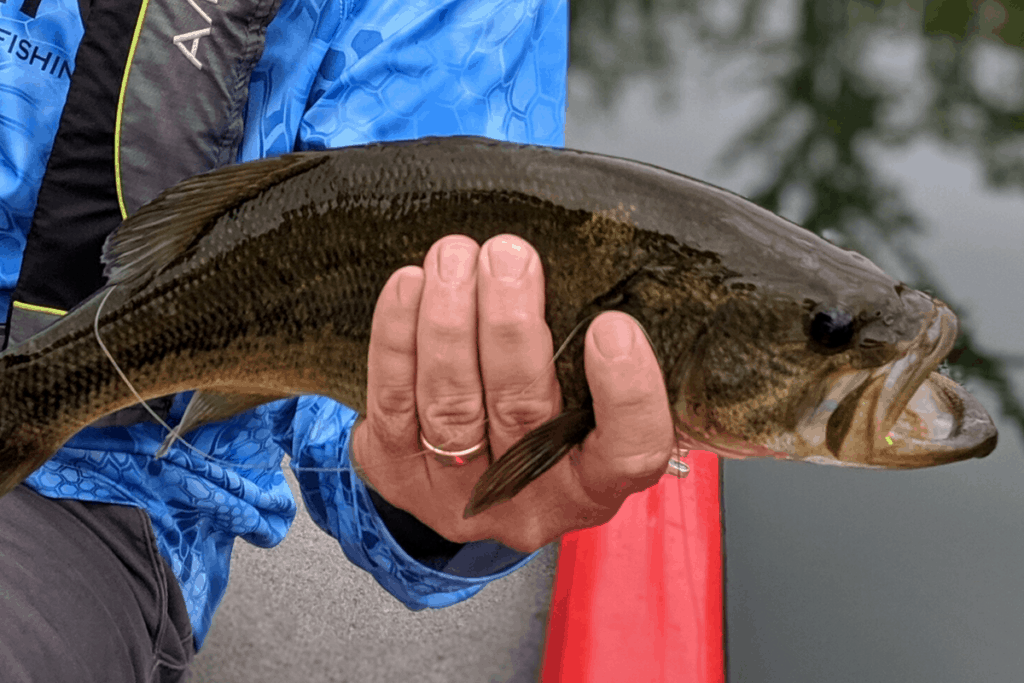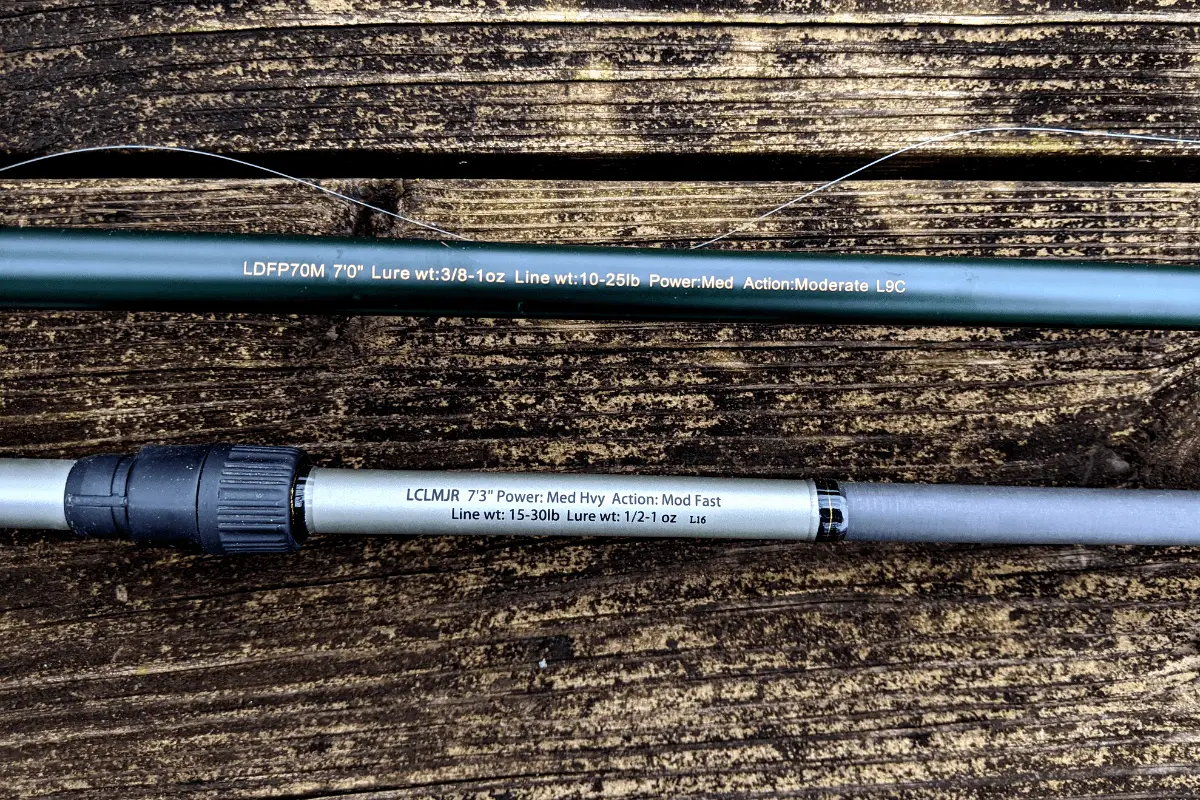A mechanic has a chest full of tools that each do a unique job. Fishing rods can be looked at the same way. Certain rods are designed for specific presentations and lures. There are also rods that do a nice job of working for a broader range of applications.
Anglers need to first identify what type of presentation they want a rod for. Lures presented on the bottom do best with a Medium Heavy power rated rod with a fast action. Horizontally presented lures, like a crankbait, work well with a Medium power rated rod and a Moderate or Slow action.
In this article, I will break down what these terms mean and discuss in detail how to select a rod that will best suit your needs.
What is Rod Power Rating?
The terms Power and Action are used interchangeably by mistake. We have all misused this industry verbiage without knowing it, yet the meanings are very different.
Power rating refers to the stiffness, or the backbone, of the rod. A Heavy power rated rod is extremely stiff and allows the angler to transfer energy to the hook quickly. It also allows the fisherman to turn the head of the bass and get it coming to the boat instantly so it doesn’t get buried up in cover.
A Medium power rated rod means there is more flex in the overall length of the rod. In other words, the “backbone” doesn’t kick in until farther down the blank. This type of power rated rod allows for more play and flex when using lures that sport treble hooks.
What is Rod Action?
Action refers to the end, or tip, of the rod. A rod with an Xxtra Fast action means that there is not much flex in the tip and it gets to the backbone of the rod quickly.
A Medium action rod means the tip flexes farther down the rod before it gets to the backbone.
How are Power Rating and Action Matched?
Most of the time, you will see a rod with a Heavy or Medium-Heavy power rating paired up with action in the Xtra-Fast or Fast category. Medium power rated rods will have an action that is Moderate or even Slow.
These are important factors to remember when choosing a rod to match the style of fishing that you want to do.
An Example
I love to fish the Canoe Boundary Waters Area. These majestic lakes are teaming with smallmouth bass. You can catch them almost by accident at times.
On one particular outing, I was out catching my canoe partner 10:1. It had nothing to do with the lure, the cast, the location, or the presentation. We were doing exactly the same thing in the same places.
I handed this other angler my rod. Instantly, this fella started landing one fish after another.
He turned to me and said, “I had no idea a rod makes this big of a difference.”
He had been using a Medium power rated pole with a Moderate action – something that is more appropriate for crankbaits. I was using a Medium Heavy power rated rod with a Fast action.
He could now feel what was going on at the end of his line. Once we switched and he was using a rod that was perfectly matched to throwing tubes, the fish started getting caught, photographed, and released.
When to use Heavy Power Rated Rods
To best understand what types of lures and presentations are best for a Heavy power rated rod, we need to discuss what this type of rod does best.
A rod with little flex is perfect for winching bass out of heavy cover. The kinetic energy is transferred from the angler’s hands, through the rod, and to the hook at an incredible rate. Match that rod with braided line and there is virtually zero give anywhere in the process.
This means that a bass is brought out of the thick cover and is heading to the boat before it can bury down and come off.
Anytime you are fishing very, very, thick and gnarly cover a Heavy power rated rod is ideal. This includes things like frog fishing, punching matted vegetation with soft plastics, and pitching jigs to thick brush piles. If you don’t want a fish to get buried into cover, use a Heavy power rated rod.

When to use a Medium Heavy Power Rating
I believe this is the most versatile rod rating out there and offers the most acceptable crossover between presentation types, but ideally, a Medium Heavy power rated rod is matched up with bottom bouncing lures.
There is still good backbone to the rod for immediate hook sets and transfer of energy to single hook lures. The Fast action normally paired with this rod type is well suited for accurate casts.
If you like to drag jigs or use Texas Rigged soft plastics, a Medium Heavy is going to allow you to fish efficiently, feel what is going on, and land those feisty bass.
99% of the time, I have a Medium Heavy rod working for me.
When to use a Medium Power Rated Rod
I like to think about it this way, if the lure that you are fishing is presented in a horizontal manner most likely a Medium power rated rod will be perfect.
Some traditional lures that I use a Medium power rated rod include: crankbaits, jerkbaits, and topwaters.
Or you could think about it like this – if the lure you are using has treble hooks, a Medium power rating will match up nicely.
It seems contrary to what one would think, but treble hooks pull off fish with ease. Unlike a single hook that is meant for penetration, a treble hook most often “grabs” a fish. Bass can shake these hooks with ease when given too much slack or as anglers, we pull too hard.
A Medium power rated rod has just the right amount of flex to allow the bass to fight yet still maintain pressure.

Manufacturer Ratings
Rod companies have done a good job of taking the guesswork out of rod buying. Most company websites will suggest what types of poles pair nicely with what lures and presentations.
For example, I just bought a new rod that is designed for shaky head fishing. Will this spinning rod work with other lures? Absolutely, but the pros that helped to design it had a certain type of functionality in mind when it comes to presentation, feel, and hookset for shaky head fishing.
Try a Friend’s Fishing Rod
When you hit the water with a buddy, ask to try their fishing rod out for a few casts. They each have such a different feel to them. We tend to purchase rods on brand loyalty, yet there may be a rod out there that is perfect for the way you like to fish.
A friend may just have it.
If you have a local club that you fish with, suggest an outing where you each grab your favorite setup and let each other give a go for a minute or two.
I know, we get real close to our favorite rods and reels and may get nervous letting others use them, but it is fun to compare and see what is out there.
Final Thoughts
If you use this general guide to help you match the right rod for a particular presentation, I think you will find that the number of bites that you feel and the number of fish that you land will both increase exponentially.
Like I mentioned in the beginning, a mechanic has specific tools for specific jobs. An angler can approach their rod selection the same way. Yes, you can try and do everything with one rod and you will catch fish, but how many fish are you not catching? That is the way to think about it. Or, like my fishing buddy in the Boundary Waters, how many bites are you not even feeling?
Be safe out there, have fun, and be sure to encourage someone today. You never know how you might just change their life forever.

